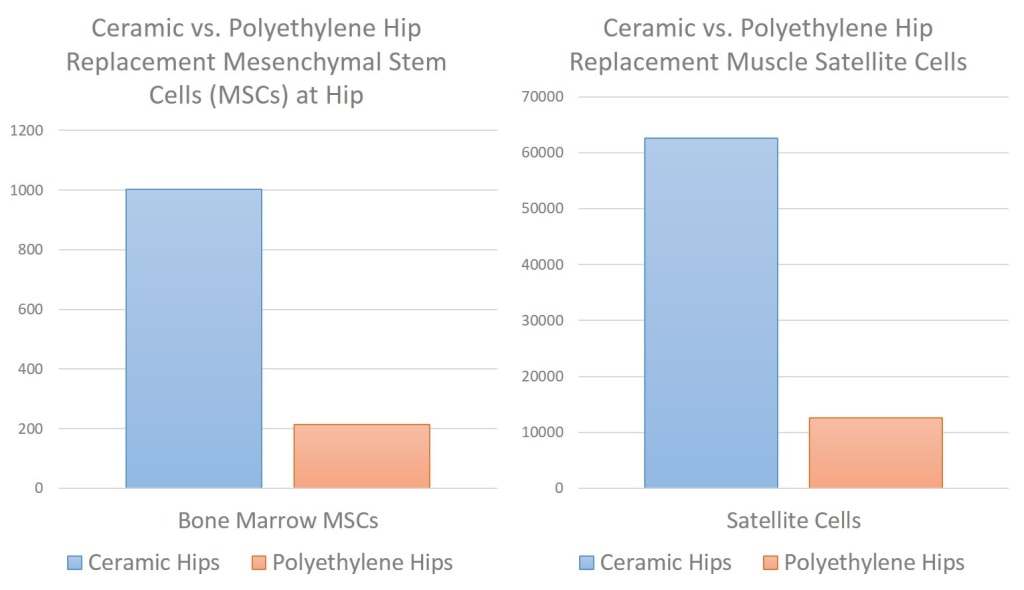Conventional Polyethylene Hips Toxic to Stem Cells?
From the 1970s through today doctors began to put all sorts of stuff in our bodies – pacemakers, valves, stents, artificial joints, etc… These were all hailed as modern medical miracles as they appeared on the scene, but what if the stuff they were made of was really toxic? We’ve known for awhile that minimally invasive metal on metal hips are bad news, spewing toxic metal shavings into the joint and blood stream. Now a new paper suggests that the plastic polyethylene hips are also toxic.
The history of modern hip replacement begins in the U.K. in the 1970s with the plastic polyethylene hip. One problem with the device was that plastic wear debris could lead to loosening of the prosthesis. As a result, a number of hybrid devices were created with ceramic and polyethylene. However, by the 1990s, a new type of highly cross linked polyethylene was created and this seemed to fix the problem of wear debris. However, despite design changes, dislocation of hip replacement devices is still a common problem.
The new study sought to look at associations between hip replacement type (polyethylene versus ceramic), dislocation, muscle atrophy around the hip, the quality of bone around the prosthesis, and the stem cell content of the surrounding bone and muscles. While there were reported associations between these things, the most interesting and disturbing finding was a dramatic difference between the stem cell content of the bone marrow and the surrounding muscles. Basically, there were about 80% less stem cells in the bone marrow aspirate of the PSIS (the bone around the hip) in polyethylene hips when compared to ceramic hips! In addition, there were also about 80% fewer Satellite cells (muscle stem cells) in the surrounding muscles of the hip and this was associated with muscle atrophy!
The upshot? Yikes! The materials we put in our body seem to have a huge impact on health. We’ve seen this with metal on metal hips causing blood levels of toxic metals to rise. This paper seems to demonstrate even more serious polyethylene hips toxic side effects. Interestingly, given that the data was collected at revision hip surgery from 1995-2005, all of the polyethylene hips were of the conventional, non-cross linked variety. So far, the new polyethylene material has had limited testing with stem cells, but that testing shows no issues. Having said that, how many other toxic materials are out there lurking?
If you have questions or comments about this blog post, please email us at [email protected]
NOTE: This blog post provides general information to help the reader better understand regenerative medicine, musculoskeletal health, and related subjects. All content provided in this blog, website, or any linked materials, including text, graphics, images, patient profiles, outcomes, and information, are not intended and should not be considered or used as a substitute for medical advice, diagnosis, or treatment. Please always consult with a professional and certified healthcare provider to discuss if a treatment is right for you.
